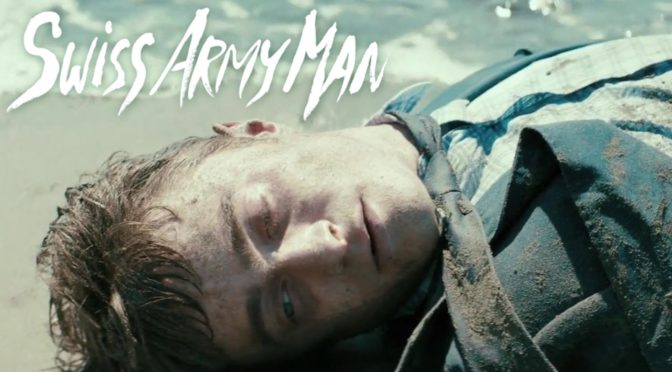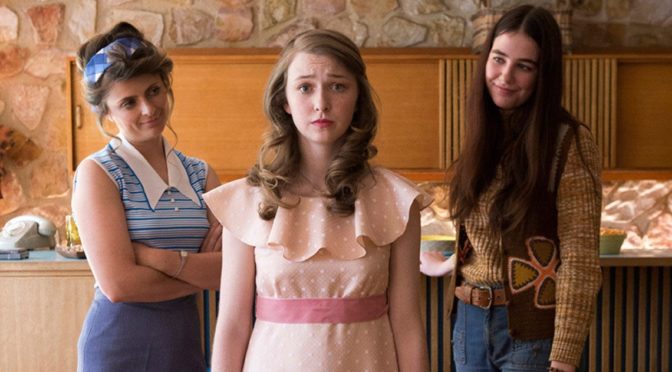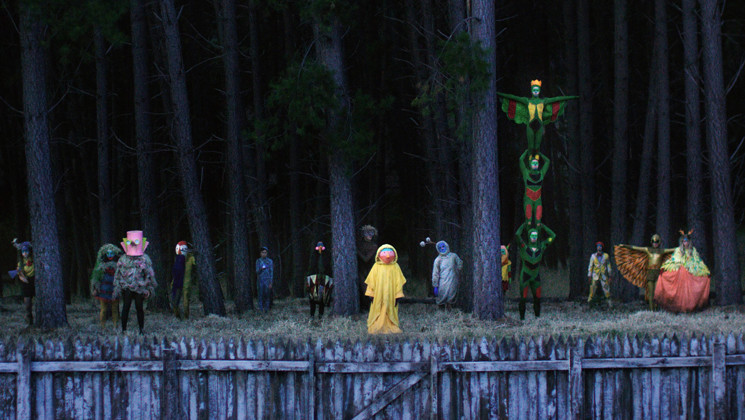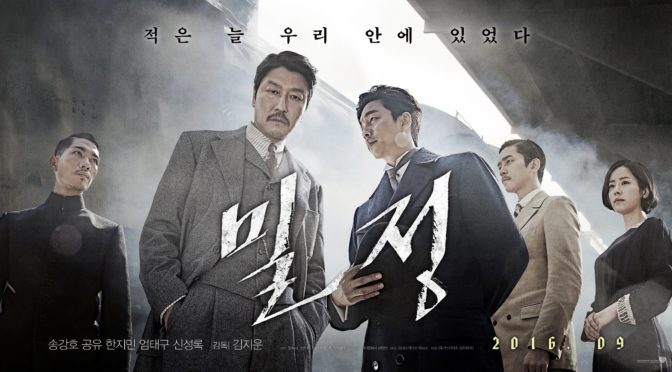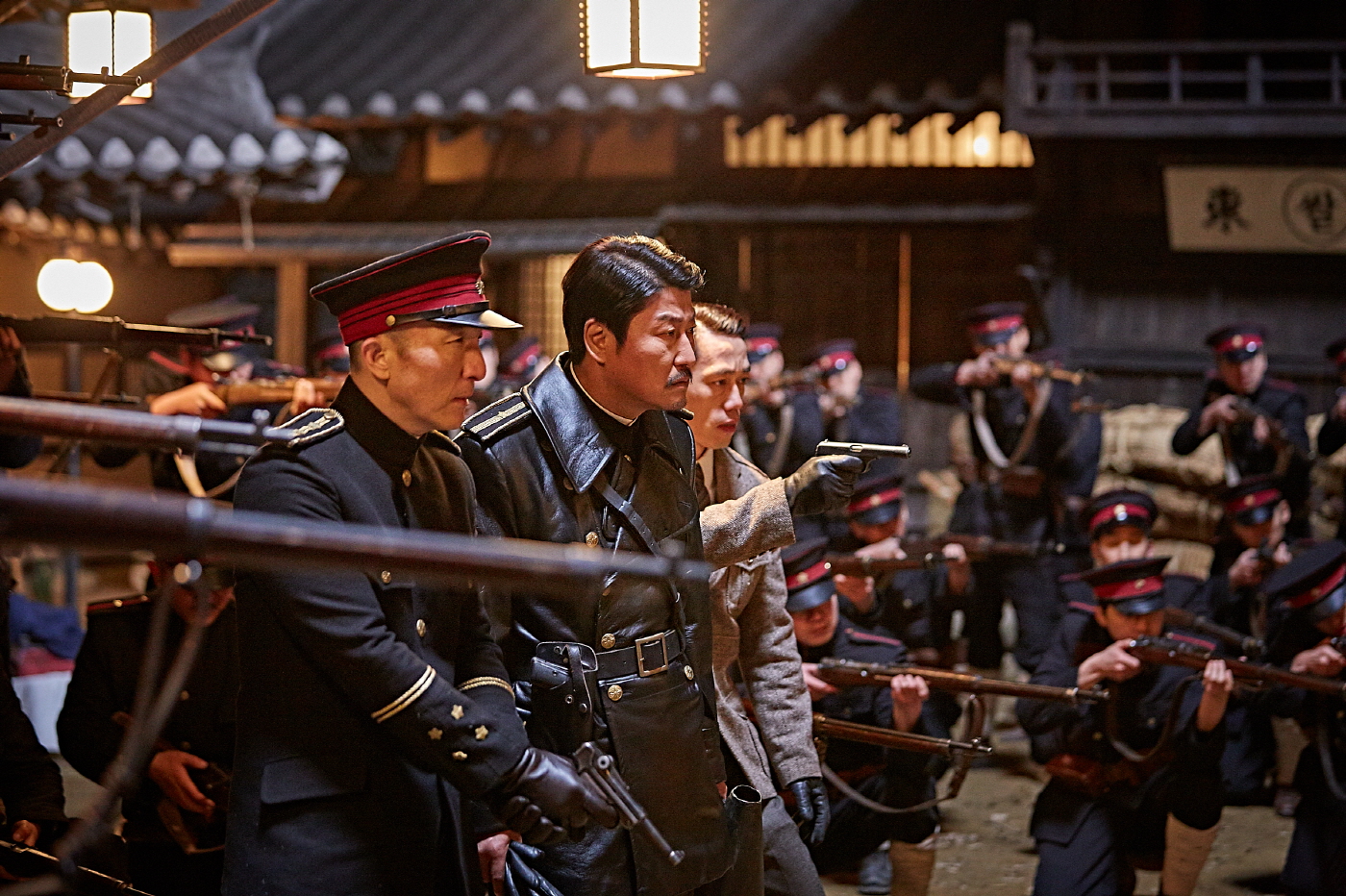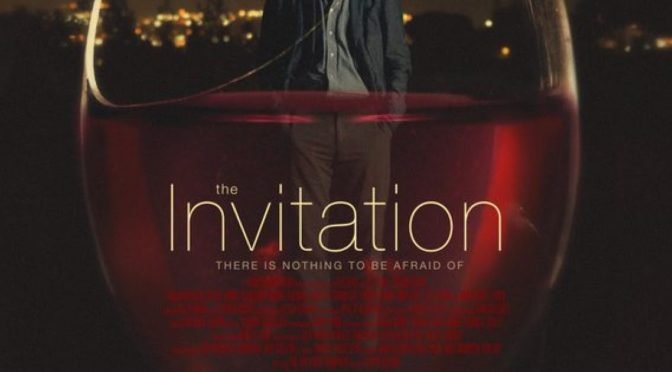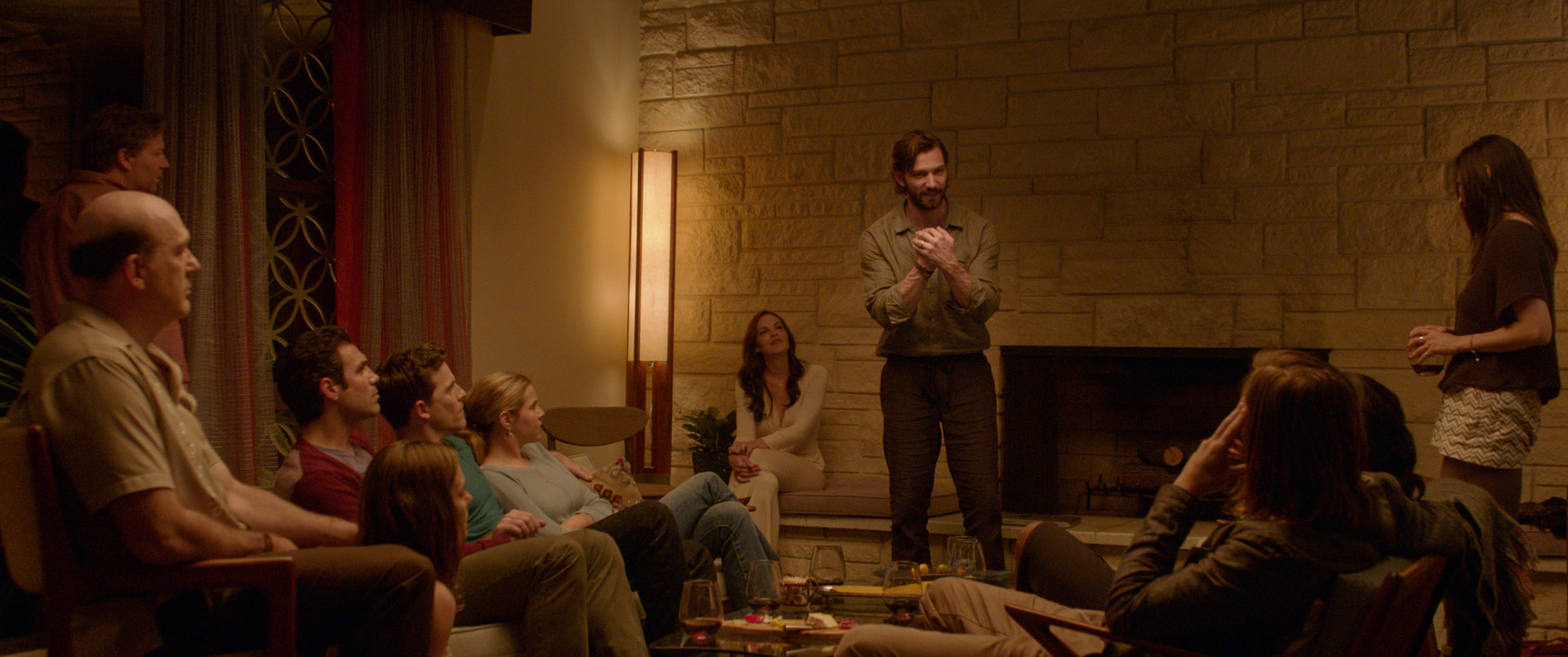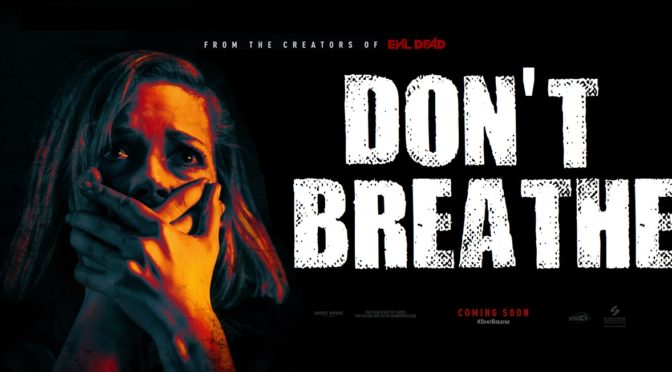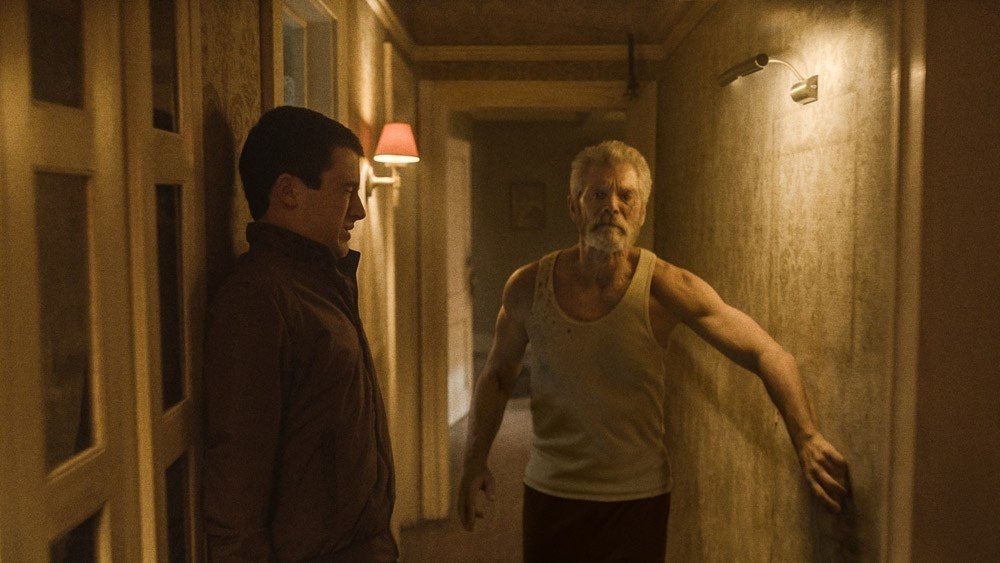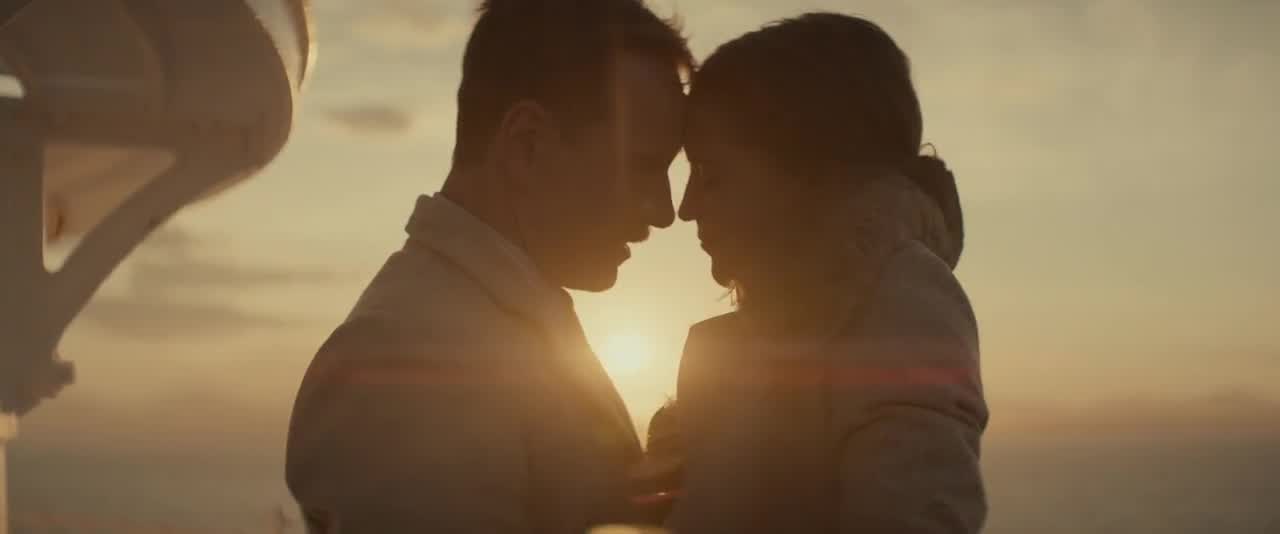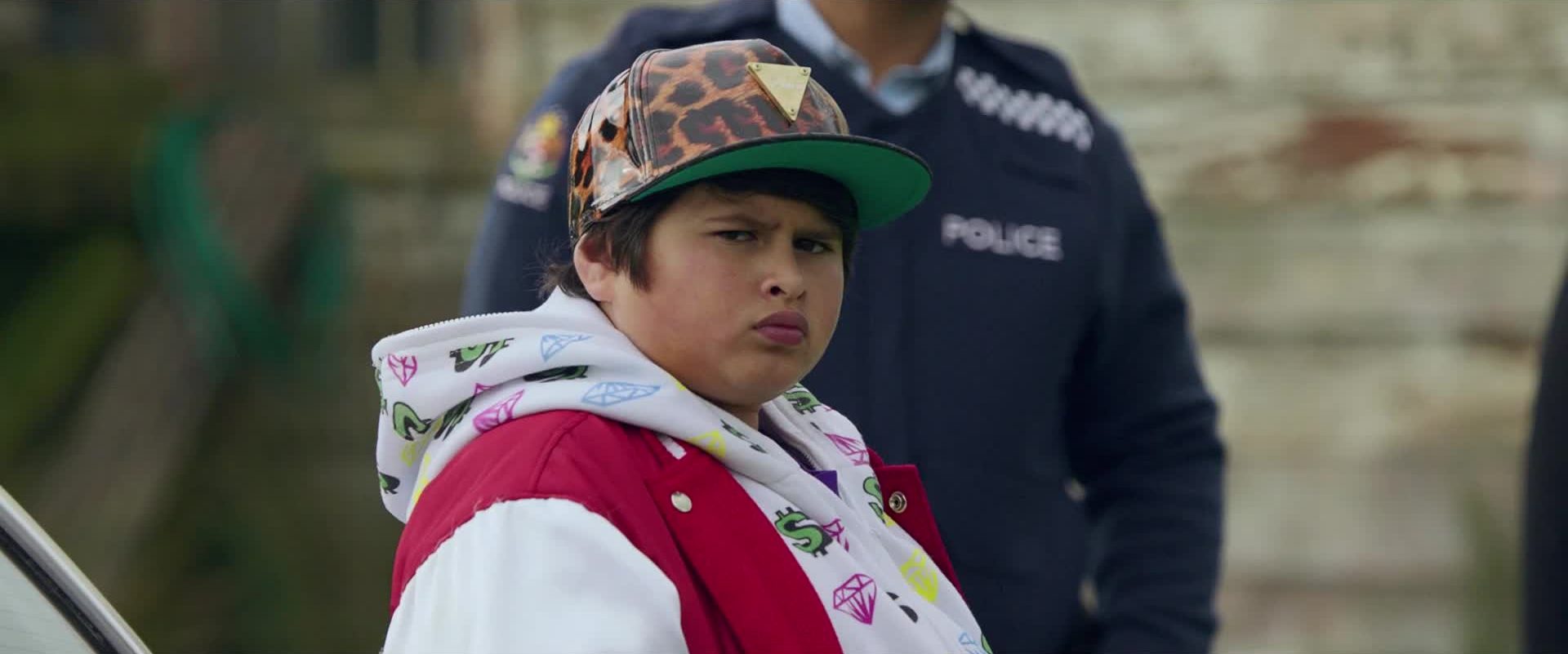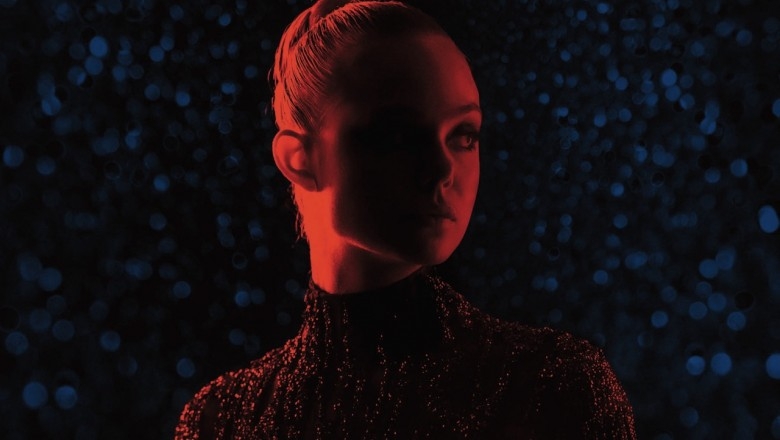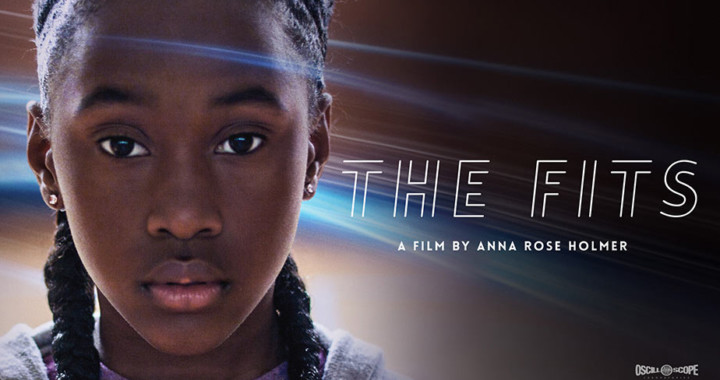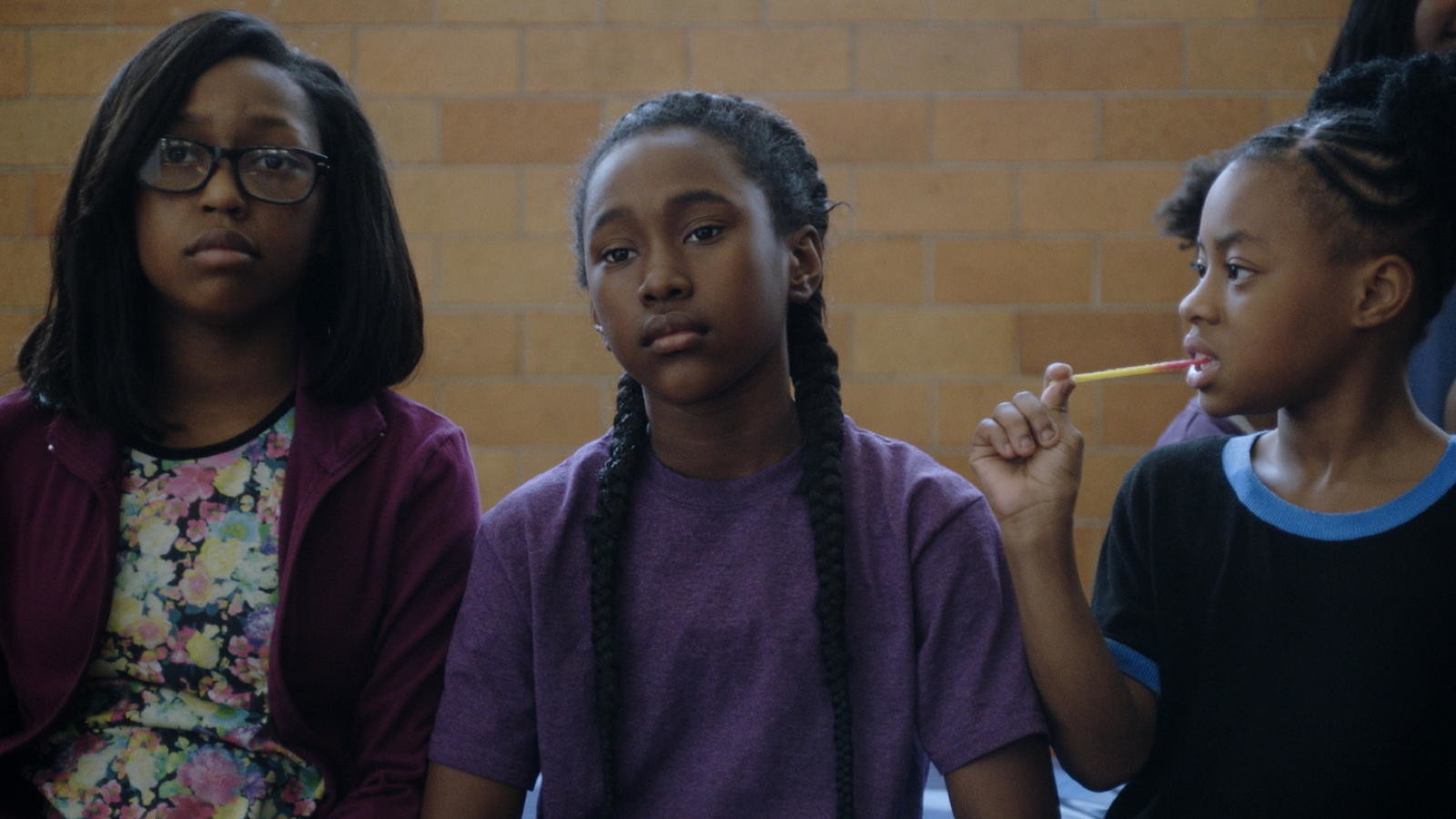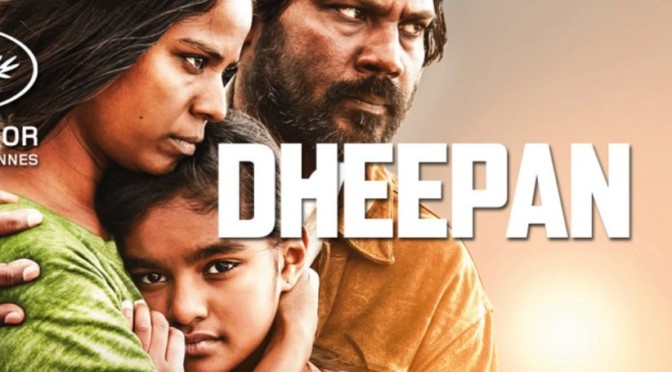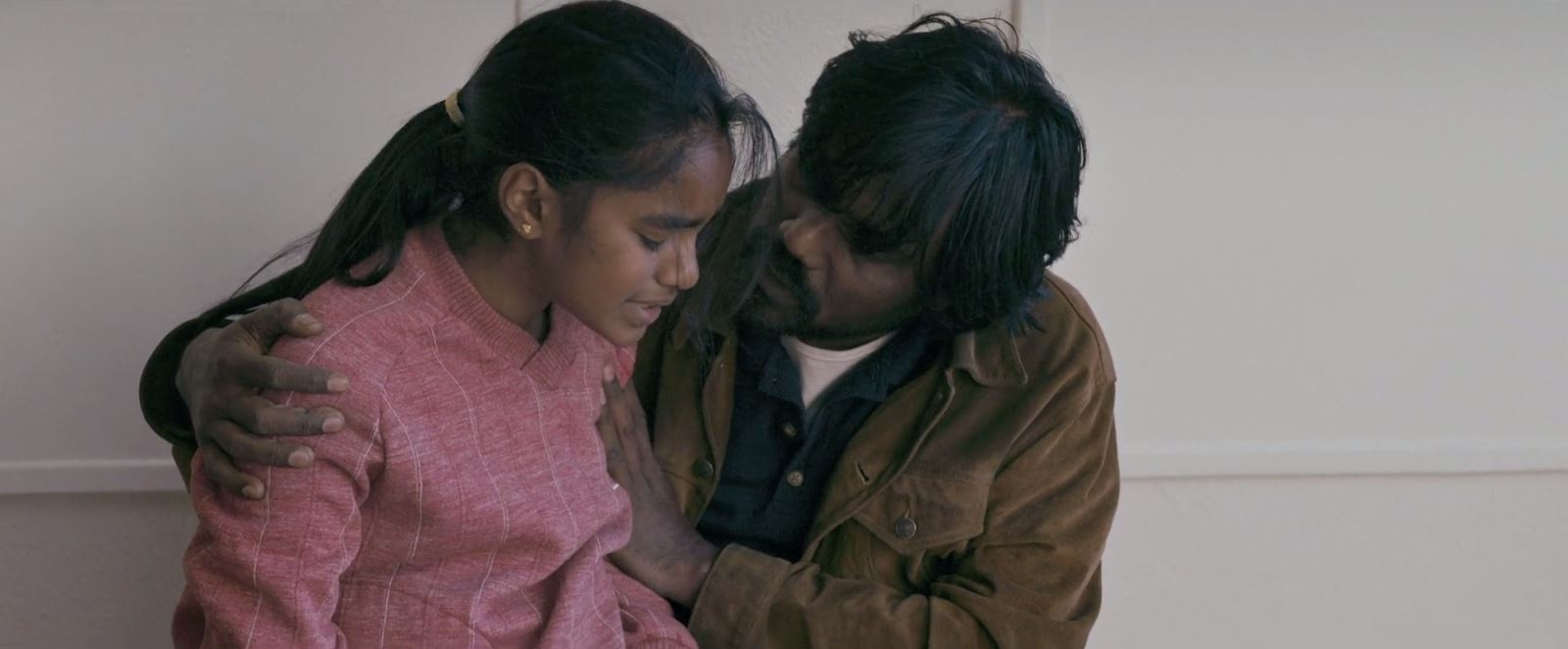Swiss Army Man is perhaps the strangest film to come out this year. Paul Dano (Love & Mercy) plays Hank, a man marooned on a small island about to hang himself in desperation until a body washes onshore. That body is the corpse of Daniel Radcliffe (Harry Potter) and upon realizing the body is dead, Hank returns to hanging himself until he is interrupted by the corpse violently convulsing. He realizes the corpse is farting and propelling itself across the water. Then Hank does the only natural thing and proceeds to ride the body like a jet ski fueled by flatulence. The duo make it to a nearby shore and attempt to reach society. Along the way the body slowly comes to life. Manny, the dead body, starts by barely talking then gains more abilities like spewing water for Hank to drink.
The beginning of the film may alienate viewers. The focus on farts, bodily fluids, and other bodily functions initially seem juvenile and can be repulsive. Nobody wants to watch someone drink water spraying out of someone else’s mouth. While these may be the most talked about aspects of the film, the directors Daniel Scheinert and Daniel Kwan (credited as “Daniels”) only use these as plot devices to advance the story. They are interested in much more than the sometimes vulgar beginning.
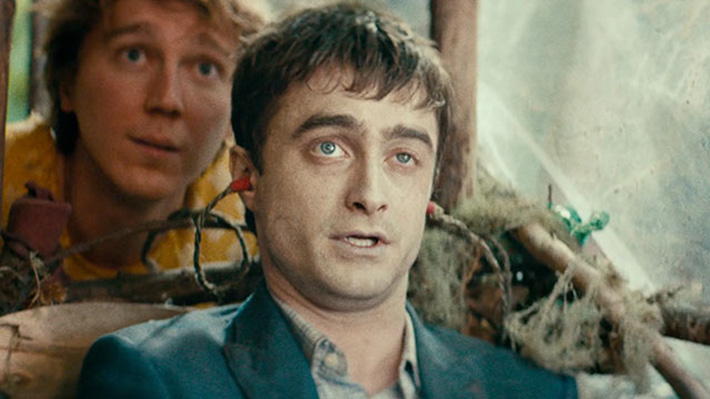
Daniel Radcliffe deserves enormous credit for his performance. His absolute commitment to the role make the character somehow believable and likable. His partially fixed facial expressions, belabored voice, and cumbersome movements all convey a body recovering from rigor mortis. As Manny becomes more intelligent and gains an ever expanding array of uses, Radcliffe’s delivery makes the character seem authentically new to the world. His acting is what makes the emotional impact of the story possible.
The film proves to be about the relationship between Hank and Manny. Hank goes to great lengths to carry Manny with him as they try to find their way back home. Along the way he does his best to educate Manny on how to behave like a living human being. He constructs elaborate, but makeshift, recreations of regular life to show Manny how to interact with others. The main skill he focuses on is talking to an attractive stranger on the bus. The Daniels use this process to examine love from an elementary perspective. Manny’s increasing intellect leads to several childlike questions that probe at social conventions. He speaks his mind because he doesn’t know what or why inhibitions exist and as Hank tries to answer, he discovers the insecurities that have caused him to miss out on life. A recurring topic is “What does weird mean?” and the role of other people’s perceptions. Hank sees how he let his lack of confidence prevent him from taking the actions necessary to achieve his desires. During these lessons, the connection between Hank and Manny grows and the power of their friendship emerges as a major theme that is examined with uncommon depth. The film becomes a story of self-actualization and building confidence to become comfortable in one’s own skin. Swiss Army Man is a sweet, earnest exploration of social norms and the value of strong bonds, but done in the most bizarre way possible

4/5 stars.
